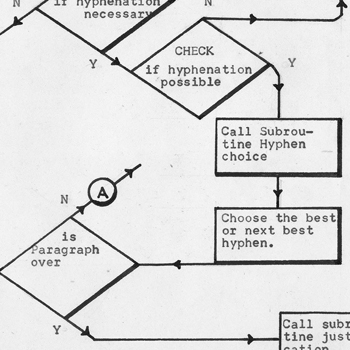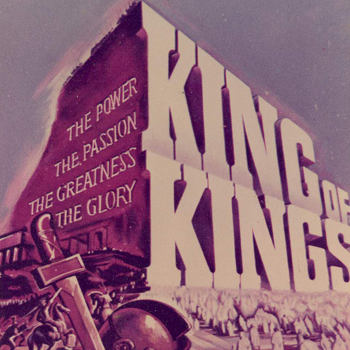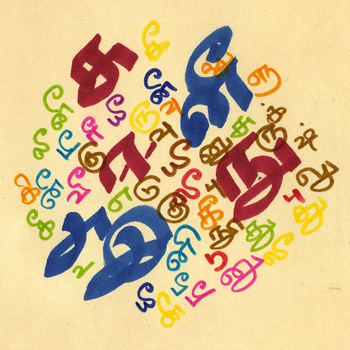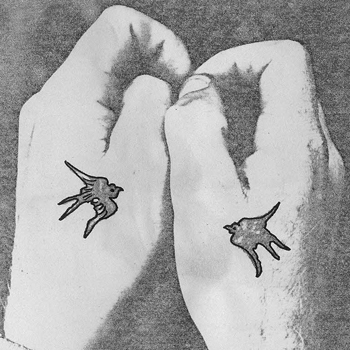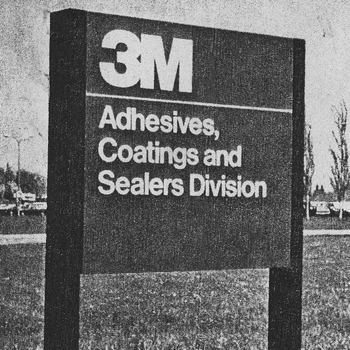Communication Design
Batch 1984-1986
(8 items)
Communication DesignBatch 1984-1986
(8 items)
(8 items)
by Khullar S
Printing, the 530-year-old process of reproduction, is a well-established industry today. From the days when a printer did the jobs of a typographer, publisher, machine operator, and proofreader, today the jobs have been categorised and specialised. A specialist handles a specialised job. A proofreader, for example, is a language expert (perhaps a graduate student) who does the correction work. He also takes care of hyphenation.
The proof reader knows the dos and don'ts of hyphenation, and in a printing setup, he is the final authority on it. He is, however, free to use a standard dictionary in case of doubt. Hyphenation is then perhaps a simple problem, and the following is a perfect solution: lets see
Information transfer has become of bloodlike importance in the body of modern business and industry. The new technology has made information transfer a faster and easier process. As a result, information processing has become faster to keep up with the former. Now, a parallel change has occurred in the print industry, certainly as far as the printing of news is concerned. More and more news from faraway places is available, so there is a need to process this news as quickly as possible, print it, and send it to the readers. A small delay and the news will be stale (radio and television are certainly faster, but print media still has a long way to go). Therefore, there is great pressure to reduce the processing time involved in printing.
by M S Athavale
Architects or Graphic designers entering the field of signage design will soon realise that there are many ways to fabricate even the simplest of signs. By becoming thoroughly familiar with the basic materials and techniques, they will be able to select and specify the most appropriate material for a particular sign system. By understanding basic joinery and construction details, they will be able to guide construction workers and design some very effective details to suit their respective conditions.
Understanding basic joinery and basic constructional details will enable architects or graphic designers to specify the right construction technique for an already selected material according to the function of the sign. The right technique, when properly used, can speed up the fabrication process, reduce cost by saving time, and produce a superior end product.
The purpose of this handbook is to present, in a concise format for easy reference, all parameters involved in the construction of a sign. The emphasis is placed on a systematic approach to tackling the task by providing checklists with relevant details and visual aids.
by Prashant Agarwal
Films have entertained Indians for the last eighty years. They have been the easiest and cheapest form of entertainment available for the masses of India. The film medium is an industry by itself. One of the largest industries in India.
A lot has been written about the Indian film industry. Its vastness, the number of films made, and the variety People have written about the producers, the directors, the actors, and the technicians. They have explored the history of films since their inception in the early part of the century. But no one has ever given a thought to the media and the people who helped to advertise and publicise these films. Those people who blew up these film personalities into super heroes Presenting the films in a highly glamourized form.
These people, who never reached the limelight of the film industry and worked lifelong in forgotten concerns, are the ones who, through their art, brought films to the masses.
No one ever tried to find out how these people worked, what they did, or what their contribution to the film industry was. This project is an effort to study a part of the film's advertising. To probe into the history of Hindi film posters and find out the design changes and trends through the years.
by S. Rama
The Tamil language is of ancient antiquity, and the chronology of its evolution from the proto-dravidian through the proto-South Dravidian spans several millennia. The Tamil script is relatively more recent.
The script of a language is largely determined by various factors, and its evolution has a bearing on the interaction of such factors. One has to take note of the geographical and topographical features of the regions where the writings are available, the materials used for engraving or writing records, the chronological factors, the political, religious, and social influence of the age, and so on.
The systematic study of the scripts is known to archaeologists as paleography. We have a rich collection of writings on rocks, metals, and palm leaves. A study of the numerous inscriptions in different regions reveals how the scripts in the various regions differ not only due to differences in the tools and surfaces but also due to the whims and tastes of the scribe and sculptor and to political, religious, and social factors of the period.
by Shaibani Azam
Comic art is a phenomenon of our times, widely read and practised. Considering that it reflects, even sets the trends of the times, it is important to discover, or rather, state, what comics are saying and how they are saying it.
In this project, an attempt was made to identify and define the means by which comic art attracts us. This project was initially titled 'Educational Content of Comic Art'. The term "educational art" was dropped because it was decided that the purpose would be best served by studying the art form as a whole. The term was restrictive in the sense that everything could be regarded as educational or not, depending on whether one means educational as 'schooling' or educational as informative. It was preferred not to define it as either, and therefore exploration could be carried out in directions that may not have evolved if one had stuck to "educational content.
The first chapter deals with comic art in general and lists some of its prominent features. The second chapter attempts a categorical analysis of content with an identification of the visual devices that prompt a category.
by Sridhar M Rangaihn
The truth, as is often said, is half-concealed and half-revealed, and hence closer acquaintance and association are needed to appreciate it in all its beauty. The artist, in man, feels it, is inspired by it, and feels happy and elevated in conveying to others his experience of the golden touch of art. When this process resolves itself into a well-ordered and accomplished fact, art turns over its conquests to science and sets forth to explore unknown regions in the Land of the Beautiful.
In real life, every experience may not be pleasant or enjoyable. The medium of art makes it so. But art is not art per se. It has a certain communicative value. It cannot remain mystic and obscure. It has to transcend and reach the people, touch them, enrapture them, and educate them. For this, it has to be concrete and tangible.
It has to satisfy a certain standard of communication. Towards this end, critical judgements were formed, and from the theories that germinated, concepts were formed. In Vedic times, and for quite a few centuries later, too, the arts were looked upon from a religious viewpoint. Arts were executed (performed) almost as a ritual. Strict adherence to the theories, principles, and concepts was considered a must. These concepts became the guidelines for judging and evaluating the perfection and beauty of a work of art.
In this report, an attempt has been made to present a few concepts from one or two aestheticians in the different art fields. India has a rich cultural heritage and has produced numerous artists of great merit as well as aestheticians of profound knowledge. It requires an exhaustive study, which is beyond the scope of this report. This report is conceived as a brief glimpse of Indian aesthetics.
by Suhail Abbasi
We all observe people at all stages of life everywhere: at home, at bus stops, railroad stations, and markets. By watching others almost every time, we learn a lot about them and eventually about ourselves. At times we register a mental note of a certain gesture in our minds; we wonder where the gesture originated, but seldom do we make an attempt to go beyond that. We feel differently in different companionships, and our feelings change accordingly, but we don't know why. For instance, we say, "I feel relaxed in the company of Mr. Malhotra'' or '' I feel uncomfortable in Mrs.Laxmi's house." If only we get a bit curious, we can learn how feelings are aroused and how and why we act the way we do.
Just a few years ago, an exciting science was uncovered and explored. It was called BODY LANGUAGE. Both its written form and scientific study have been labelled as KINESICS. It is based on the behavioural pattern of non-verbal communication. Each person develops a special behavioural pattern. If we study his behaviour clearly, we can understand him better in our next encounter. It is also possible to see beyond the surface of the event when he meets or interacts. By learning body language, a keen observer can use his knowledge to transform a boring conversation into an interesting one. The primary goal is to come to a deeper understanding of human interactions and the remarkable predictability of human behaviour.
by Virendra S Rathore
Typography, the printed word, is one of the most important areas of communication and is a fundamentally functional vehicle for transmitting ideas. Typography may be defined as the art of rightly disposing printing material in accordance with a specific purpose, of arranging the letters, distributing the space, and controlling the type so as to achieve maximum reader comprehension of the text content.
Typography was used earlier as just a way of printing a text matter with more emphasis on bringing the content matter across in a more comprehensible way. But in today's world, typography has acquired a much wider visual sense. Typography has become a medium of visual communication. With the Dada movement and, more recently, the onset of concrete poetry, typography has acquired a new dimension in the world of visual images.
Typography at present is not restricted to the printed matter on a page but has extended its definition to projected typography on film, video, and television mediums. Computer-aided typography is yet another field that has assumed prominence in recent times. Laser typography is the vision of the future. Typography as used in different applications has its own styles, limitations, constraints, and analytic values. Each application, so to speak, dictates a different typographic approach. In some applications, the point size or boldness might be more important, whereas in others, the column width, layout, etc. might be more important; in yet another, the grey value of the printed area; and so on. This project is an investigation into different typographic fields with respect to different applications and an analytic review of the parameters of typographic design. Typographic samples have been collected and classified into different fields to facilitate easy understanding. The samples in each field have been analysed with respect to the different parameters involved.
